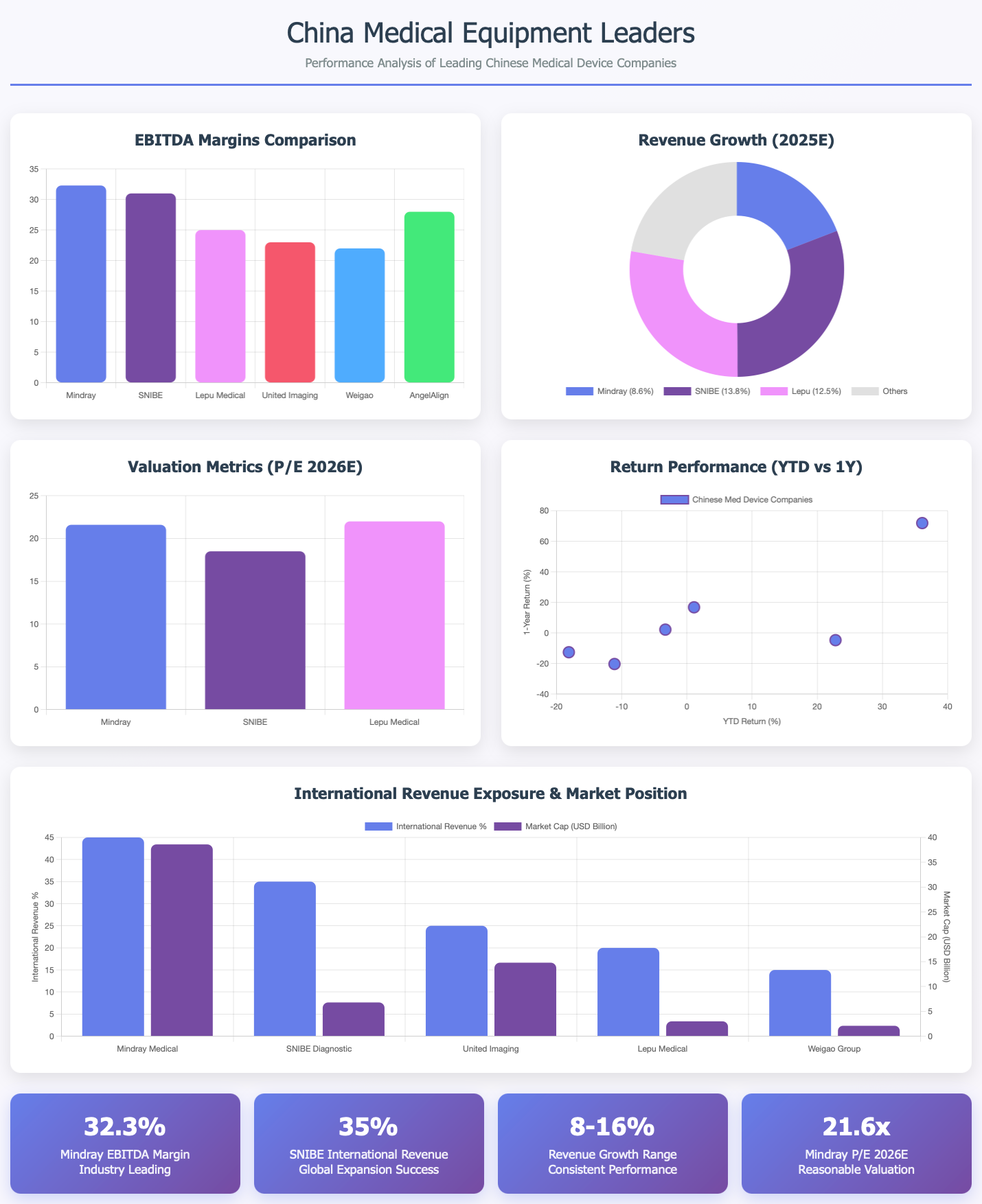China’s Medical Device Champions: From Local Players to Global Tech Leaders
How Mindray, United Imaging, and SNIBE are rewriting the rules of medtech – and why Wall Street hasn’t noticed (yet)
Good Evening,
When we set out to analyse China’s healthcare transformation, the plan was straightforward: two comprehensive articles to cover it all. That turned out to be wildly optimistic. The sector’s evolution is simply too rich and too important for broad brushstrokes.
This piece is Part 3 of what has now become an expanded series. Previously in this series, published last week:
Policy-Driven Transformation: A macro and regulatory overview of key reforms, demographics, and system design, outlining sector winners and losers without delving into valuations.
Innovation & Global Competition: Biotech pipelines, cross-border licensing, AI integration, and China’s push into global medtech and health exports.
Today, we begin our deep dives by focusing on medical devices – a segment where Chinese manufacturers have evolved from low-cost import substitutes to genuine global technology contenders. In upcoming articles, we’ll cover:
Biotech & Traditional Pharma: CSPC, Hansoh, Hengrui, Innovent, BeiGene, Sino Biopharm, Yunnan Baiyao
Digital Platforms & Services: JD Health, Alibaba Health, Ping An Good Doctor, Hygeia Healthcare, Jinxin Fertility
CRO/CDMO & Vaccines: WuXi AppTec, WuXi Biologics, Asymchem, Pharmaron, Tigermed, Kangtai, CanSino, Walvax
For now, we begin with medical devices. It’s no longer just about commodity orthopaedic screws or basic diagnostics. Companies like Mindray, United Imaging, and SNIBE are building export revenue streams and innovation pipelines that would have seemed unimaginable a decade ago.
This piece unpacks how domestic policy, demographic tailwinds, and rising R&D intensity are converging to create global healthcare champions – and why their valuations still reflect yesterday’s narrative.
As usual this piece is mostly paywalled, so do please join up if you’re interested in it or any of the following ones.
Portfolio Review will be published this week, most likely at the very end of it. Another feature for the premium subscribes.
Serious about investing in Asia? Then your process needs more Panda.
We get it, for some readers, a Substack alone isn’t enough. If you’re looking for sharper insights, personalised feedback, or just someone to help you cut through the noise in China and Asia, we also offer bespoke research calls and strategy sessions.
Right now, we’re working with clients on China’s consumer landscape, the 2Q25 macro outlook, robotics and now Medical Equipment and Policy.
See what we offer here, and connect with us today or message us directly.
Nothing in this Substack is Investment Advice. This information is provided for informational purposes only and does not constitute financial, investment, or other advice. Any examples used are for illustrative purposes only and do not reflect actual recommendations. Please consult a licensed financial advisor or conduct your own research before making any investment decisions. The authors, publishers, and affiliates of this content do not guarantee the accuracy, completeness, or suitability of the information and are not responsible for any losses, damages, or actions taken based on this information. Past performance is not indicative of future results.
China's medical equipment sector represents the most compelling investment opportunity in global healthcare today, driven by a unique convergence of factors that create immediate and sustainable competitive advantages. This is not merely another emerging market story—Chinese companies have achieved genuine technology leadership that now threatens established Western incumbents while capturing accelerating global market share in the $180 billion medical device industry.
The investment thesis rests on three transformative developments occurring simultaneously. First, Volume-Based Procurement (VBP) implementation has completed its destructive phase and now favors the most efficient Chinese manufacturers, who have emerged stronger with enhanced market share and operational excellence. Second, innovation capabilities have reached critical mass where companies like Mindray Medical and United Imaging compete on technology rather than cost, achieving clinical outcomes that match or exceed international standards. Third, export competitiveness has evolved beyond cost advantages to encompass genuine technological superiority in key segments, enabling Chinese companies to displace Western incumbents in their home markets.
The financial evidence is compelling. Leading companies generate revenue growth of 8-16% while maintaining EBITDA margins of 20-40%—performance that significantly exceeds guidance and demonstrates operational discipline superior to global peers. Mindray Medical trades at 21.6x 2026E and 16.8x 2027E earnings, reflecting reasonable valuations for a company with 8.58% revenue growth and industry-leading 32.3% EBITDA margins. SNIBE Diagnostic's 35% international revenue exposure and 31% EBITDA margins demonstrate execution quality that clearly places it ahead of both domestic and regional competitors.
Why Now? Three catalysts create immediate opportunity. VBP's completion has eliminated pricing uncertainty while consolidating market share among winners. Post-COVID validation has proven Chinese quality and reliability to global customers previously skeptical of domestic alternatives. Regulatory parity with international standards has removed the final barriers to global market acceptance, while current valuations reflect 2022-2023 lows rather than fundamental prospects.
Who Loses? Western incumbents face accelerating market share erosion. GE Healthcare has lost 15 percentage points of market share in China's medical imaging market over three years. Siemens Healthineers' China revenue declined 8% in 2024 while United Imaging grew internationally. Philips' diagnostic imaging division faces margin pressure as SNIBE captures global IVD market share at 40% cost advantages.
Our analysis identifies medical equipment as the most attractive healthcare sub-sector for institutional investors, offering superior risk-adjusted returns through structural growth drivers, completed competitive positioning, and multiple expansion potential as global markets recognize Chinese technological leadership.
Keep reading with a 7-day free trial
Subscribe to Panda Perspectives to keep reading this post and get 7 days of free access to the full post archives.





